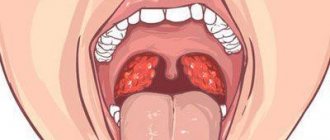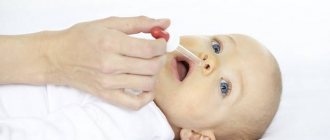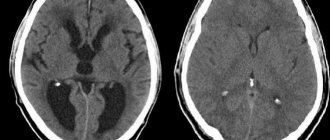What it is?
Iodophilic flora is the general name for intestinal microflora, consisting of iodophilic bacteria (they are so named because they love iodine, which was the principle of their discovery).
Iodophilic bacteria in the child’s intestines begin to actively multiply as a result of fermentation processes, which will be visible in a stool analysis.
Iodophilic bacteria are clostridia, other cocci and rods, and yeast. The child's intestinal microflora may consist of:
- Conditionally pathogenic and non-pathogenic clostridia are normal intestinal flora and there is no reason for concern.
- Pathogenic cocci, fungi and a large number of bacilli are pathogenic microflora and in most cases they require treatment.
Normally, iodophilic flora (speaking of pathogenic bacteria) can be present in only small quantities in an infant or older child after ingesting a large amount of fruit, which causes an active fermentation process in the small intestine. The iodophilic flora itself is localized in the child’s cecum and ileum, and therefore it is very easy to detect in the coprogram with feces.
Iodophilic bacteria
The intestinal microflora contains beneficial and opportunistic microorganisms. Beneficial ones include lacto- and bifidobacteria, which are involved in the digestion of food, the synthesis of certain organic substances, and generally provide healthy intestinal immunity. Opportunistic flora also makes a valuable contribution to the digestive system, for example, it enhances intestinal motility and helps process proteins. The balance of microorganisms in a healthy intestine is maintained when lactic acid bacteria predominate in it, and opportunistic bacteria are in the minority and at a resting stage.
If for some reason beneficial microorganisms decrease in volume, pathogenic microorganisms begin to actively multiply, thereby causing various changes and pathologies in the intestines.
Iodophilic microbes mainly consist of opportunistic fermentation organisms. This happens because they break down starch into glucose, and then into fermentation acids.
Putrefaction and fermentation processes occur especially actively if the intestines of an adult or child contain large quantities of digestible plant fiber, as well as easily digestible carbohydrates. That is why pathogenic flora multiplies more actively in those people whose diet is rich in carbohydrate foods.
Iodophilic microflora refers to gram-positive microorganisms. It can be normal, such as clostridia, and pathogenic: yeast fungi, spherical bacteria (cocci), rods.
In a healthy person, be it a newborn or an adult, few of these bacteria live in the large intestine; their volume directly depends on the total number of positive microorganisms.
In children, iodophilic flora should normally not be present in the feces at all or in moderate quantities. Indicators above normal (+1) should be an alarm bell, as they can indicate various diseases and pathological conditions of the gastrointestinal tract.
Is iodophilic flora normal?
As mentioned earlier, iodophilic bacteria are in the child’s intestines in a conditionally pathogenic state; a small number of pathogenic bacteria means that fermentation processes have begun in the intestines. But if pathogenic flora is found in large quantities in the child’s stool, then this is already a sign of illness or malfunction of the intestines.
Therefore, it is important, if the test for iodophilic flora is positive, to retest the stool several times, and also to limit the child’s diet a few days before the test - a minimum of carbohydrates.
Iodophilic flora: is the presence of iodophilic flora allowed in a child’s stool?
Sometimes, during the research, iodophilic flora is found in the child’s stool, and this fact naturally alarms parents. They immediately begin to wonder how normal this is, whether there is a threat to health, and if so, what measures should be taken.
The term iodophilic flora is commonly understood as opportunistic intestinal microflora. It usually contains some types of microorganisms.
According to their properties, iodophilic flora is grouped into 2 types:
- Clostridia. These gram-positive, obligate anaerobic bacteria do not pose any danger.
- The second type, pathological flora, on the contrary, explains that the child’s body contains bacilli, staphylococci and echinococci in large quantities.
In fact, the pathological iodophilic flora found in the feces of a child is a significant deviation from the norm. Although sometimes iodophilic flora of this type is still detected in single quantities. It usually occurs with constipation.
Causes
Iodophilic flora in a child’s feces can be detected due to certain internal pathological processes and external factors:
- Lack of enzymes for digesting carbohydrates (problems with the pancreas).
- The rapid movement of food and feces through the intestines, as a result, accelerated evacuation of feces and enzymes do not have time to fully act on the chyme (feces in the small intestine).
- Long-term use of antibacterial agents.
- Dysbacteriosis of various etiologies.
- Parasitism in the intestines of worms.
- Diseases of the stomach, pancreas, liver, etc.
- Taking a course of chemotherapy.
- Various intestinal diseases accompanied by inflammatory processes.
- Food intoxication (poisoning).
- Violation of the regime and diet (especially often the cause of the appearance of iodophilic flora in infants).
Depending on the cause of the appearance of iodophilic flora in the child’s feces, the course and direction of treatment will be different.
Reasons for the activity of pathogenic bacteria
Rod-shaped and other pathogenic microorganisms of iodophilic flora can increase their activity for various reasons:
- Long-term or frequent use of antibiotics. Antibacterial drugs destroy all beneficial lactic acid bacteria, thereby stimulating the active reproduction of opportunistic bacteria.
- Helminthic infestation (infection with parasites).
- The predominance of simple carbohydrates and foods high in starch in the diet for a long time. It may appear in a baby due to a restructuring of the digestive system and the transition to solid food. In this case, no treatment is required; the intestines will adapt on their own and return to normal.
- Dysbacteriosis is a change in the balance between normal and opportunistic bacteria. General decrease in immunity.
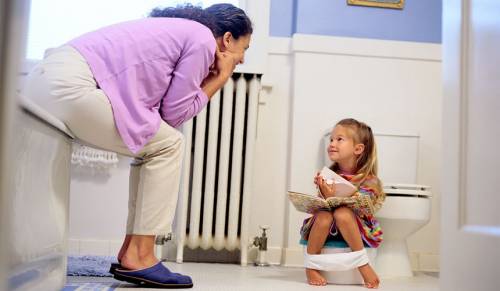
Also, iodophilic flora in a coprogram may indicate many gastrointestinal diseases such as gastritis, pancreatitis, increased peristalsis, putrefactive dyspepsia, and inflammatory processes. Therefore, if iodophilic bacteria are detected in the stool of an adult or child, a more detailed medical examination should be carried out and the root cause should be identified.
However, a stool analysis that reveals the presence of representatives of iodophilic flora does not always indicate that there is a serious pathology. The increase in the activity of these microorganisms may be temporary and associated with the intake of carbohydrate foods on the eve of the test.
How does it manifest?
If the iodophilic flora is present in the child’s intestines for only a short period of time, then such a process can go completely unnoticed and asymptomatically, and you can only find out about the change by accidentally passing a stool test at that moment.
But if iodophilic flora is a symptom of the disease, then the child will certainly have other signs:
- Abdominal pain in the stomach area.
- Painful bowel movements.
- Diarrhea or constipation that lasts for a long time.
- Sleep problems.
- General poor health - moodiness, lethargy, fatigue.
- Losing weight with a normal diet.
- Refusal to eat.
- Changes in the consistency, odor and color of the stool (has an unpleasant odor, almost foul, the color can vary from pale yellow to greenish).
These signs can be observed in a child to a greater or lesser extent, but parents should pay attention to absolutely all oddities, since even a rise in temperature, belching or vomiting will help the doctor make a diagnosis and get rid of iodophilic flora in a timely manner.
Is it necessary to get rid of iodophilic flora?
When iodophilic flora is detected in a child’s stool, parents often begin to treat their child on their own or run to all doctors.
There is no need to panic from the first minute. To begin with, you should remember whether the child ate a large amount of fruits and vegetables within a couple of days before taking the tests. Perhaps his diet has changed due to some circumstances, or he is now taking antibiotics or being treated with other drugs that can affect the digestion process.
In any of the options, after a few days it is necessary to repeat the stool test (after limiting the child’s diet), rather than starting treatment on your own. If pathological microflora is again detected in the child’s stool, then you should consult a doctor.
Parents should also pay attention to the child’s well-being; if he is cheerful, eats well, and does not complain of pain or other problems, especially related to bowel movements, then the doctor can determine that this is a normal reaction of the body.
You should definitely answer all the doctor’s questions and undergo additional examination and only then decide whether to start treatment or not.
Causes of pathology
There are a number of reasons that can cause the development of iodophilic organisms in a child’s stool:
- Eating too much fruit. This entails the occurrence of putrefactive dyspepsia and, as a consequence, the development of pathogenic microflora.
- Digestive disorders in the small intestine.
- Digestion is disrupted directly in the stomach.
- Gastrointestinal diseases: pancreatitis, appendicitis, pain in the intestinal area.
- Dysbacteriosis in the child's body.
A focus of iodophilic flora appears in the ileum of the cecum, resulting in accelerated release of chyme. This provokes an acid reaction, which causes fermentation. Its development can be caused by a large amount of starch and complex carbohydrates, which are a good environment for the proliferation of bacteria. Microorganisms can appear in the child’s biomaterial only for a short time, after which the coprogram will again show normal results. Temporary disruptions are caused by high carbohydrate consumption shortly before the test.
A large amount of fiber and carbohydrates in a child’s diet are the main causes of increased gas formation and intestinal disorders. If such symptoms occur, it is worth getting tested. Iodophilic microflora can be a feature of the body and not disturb a person for a long time. This is an opportunistic environment, and under some circumstances harmful bacteria can develop. A pathological condition occurs if a child suddenly changes his diet and begins to eat more starch. It is necessary to consider why dysbiosis occurred and why this condition is dangerous for a growing organism. Food will pass more slowly through the intestines, where fermentation will occur. A large amount of fruit eaten leads to putrefactive dyspepsia. When changing your diet, you should not use medications. The body can begin to produce beneficial bacteria on its own. But children with birth defects associated with weakened immune systems are given probiotics.
Diagnostic methods
Iodophilic flora can be determined in a child’s stool using a simple analysis - a coprogram. In a stool test, the bacteria will be colored orange (brownish) and the laboratory doctor will be able to determine under a microscope what type of bacteria predominates in the child’s stool. He will be able to distinguish cocci, clostridia and other types of bacteria.

The coprogram is deciphered by a pediatrician and based on the data obtained (preferably several tests if the primary result is positive) and then puts forward a diagnosis and, if applicable, treatment.
Drug treatment
Treatment of a child who has iodophilic flora detected in his stool should begin only after consultation with a pediatrician. This sign may be a symptom of a specific disease of the digestive tract, and then it will be necessary to direct all efforts to eliminate the current pathology. But this is decided in each specific case by a pediatrician.
Regarding the general principles of treatment, it is initially necessary to destroy the pathogenic microflora; this can be done with the help of Tetracycline, Cephalosporin, Penicillin, Metranidazole and other antibacterial drugs.
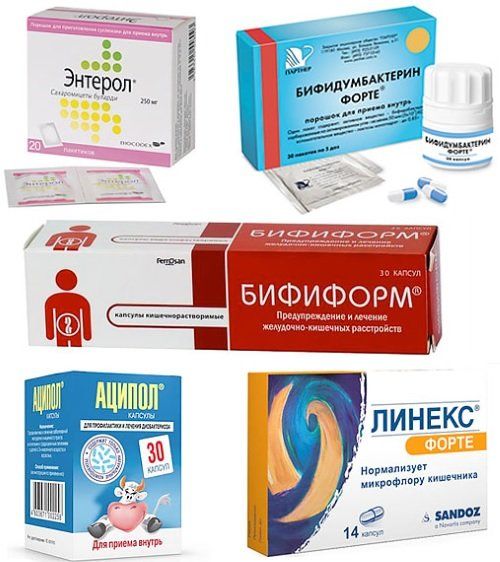
Next comes a course of restoring the normal microflora of the child’s intestines and it consists of the following medications:
- Probiotics for populating the intestines with beneficial bacteria - Linex, Bifiform, Bifidumbacterin, Acylak, Probifor, etc.
- Prebiotics - in addition to beneficial bacteria, contain a substrate for development and help them more actively populate the child’s intestines. These are Hilak-Forte, Lactusan, Duphalac, etc.
- Herbal medicines for normalizing intestinal motility with St. John's wort, oregano, calendula, yarrow.
- Bacteriophages for the fight against pathogenic and opportunistic bacteria - Klebsiella, Intesti, Pseudomonas, Sextaphage, etc.
Pathology treatment methods
If a patient has elevated readings of iodophile bacteria in the stool, additional diagnostics must be carried out. The goal is to determine the causes of the increase in iodophiles and make a diagnosis.
Such diagnostic procedures include:
- comprehensive study of intestinal flora;
- blood biochemistry;
- Ultrasound examinations of the gastrointestinal tract.
After diagnosis, therapeutic treatment is carried out, which contains several stages:
- selection of specific drugs for the treatment of the disease;
- adjusting the diet, if necessary, using an individual diet;
- taking bacteriophages to reduce the level of pathogenic microflora;
- the use of probiotics containing lactic acid microorganisms to restore normal microflora.
The presence of iodophilic flora in the feces and an increase in its level (1+) is not a disease as such, but only a certain signal that requires additional diagnostics to identify the causes and take timely measures.
The appearance of iodophilic flora in the feces of a child (infant) is usually observed as a result of a decrease in the number of lactobacilli and bifidobacteria in the intestines. In this case, these beneficial microorganisms are replaced by pathogenic and conditionally pathogenic ones, among which are: yeast, cocci, rods, spindle-shaped bacilli, clostridia, etc.
In a healthy child, such microorganisms should be absent in the stool. Let's talk in more detail about what such an analysis result as “iodophilic flora in feces” generally means, and what to do if it is detected in your baby.
Diet
In addition to treatment with specific drugs, the diet and regimen are very important for the child. If iodophilic bacteria are already found in the child’s stool, then its use should be limited:
- fermented milk products;
- fruit;
- legumes;
- cabbage in any form;
- bakery products;
- products with a high starch content.
Diet in this case is one of the most important points for the treatment and complete recovery of the child.
This rule should not be neglected, and then it will be possible to get by with a minimum amount of drugs and be cured in a short period of time.
Treatment of children and adults
If iodophilic flora is detected in a child’s stool, the doctor may prescribe several treatment options, depending on the patient’s age:
- If the activity of pathogenic bacteria is detected in breastfed infants, dietary nutrition for the mother is recommended.
- If the child is bottle-fed, you should choose another option for formula milk.
- Sugar, foods high in starch and fiber should be excluded from the diet of children who are already completely independent, and the amount of plant fiber should be reduced.
- If necessary, a course of probiotics or bacteriophages may be prescribed to improve digestion.
In general, the treatment of adults and children in the absence of serious gastrointestinal pathologies is no different. Adults are prescribed the same bacteriophages and probiotics, and a diet is also recommended that excludes:
- Products that cause fermentation and increased gas formation (white cabbage, black bread, milk, legumes, apples, corn).
- Wheat bran and other coarse fiber.
- Starchy vegetables and grains (such as refined rice).
- Fruits high in sugar (grapes, melon, etc.).


